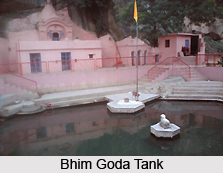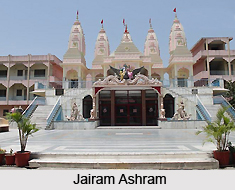 The divine place of pilgrimage, Haridwar is overfilled with places of mythological attractions. Here, Gods has appeared in its various forms like Lord Ram and Bhim, one of the five Pandavas. There are various places of visiting in Haridwar like sanctuary of birds which is an ideal place for bird lovers. There are beautiful architectural temples and ancient idols and deities housed in Haridwar.
The divine place of pilgrimage, Haridwar is overfilled with places of mythological attractions. Here, Gods has appeared in its various forms like Lord Ram and Bhim, one of the five Pandavas. There are various places of visiting in Haridwar like sanctuary of birds which is an ideal place for bird lovers. There are beautiful architectural temples and ancient idols and deities housed in Haridwar.
Neel Dhara Pakshi Vihar
As the name sounds the place is meant for sheltering birds, situated on the banks of the main river Ganga or Neel Dhara, at the Bhimgoda barrage. It is a place worth visiting for bird watchers and a haven to the wandering birds during the winter season.
Bhimgoda Tank
This tank`s existence is credited to Bhima, the strongest amidst the Pandavas. While the Pandavas were moving onto the Himalayas en route Haridwar, Bhima drew water by plunging his knee into the rocks. This tank is situated at a distance of about 1km from Har-Ki-Pauri.
JaiRam Ashram
This place is famous for its panoramic sights and exhibitions, and a colossal white statue which represents the episodes of Samudra Manthan, which is worth a visit.
 Sapt Rishi Ashram and Sapt Sarovar
Sapt Rishi Ashram and Sapt Sarovar
This place is a scenic beauty situated nearby Haridwar. It is 5km fromHar-Ki-Puri.
According to a legendary belief, the Sapt Rishis or Seven sages namely Kashyapa, Vashisht, Atri, Vishwamitra, Jamadagni, Bharadwaja and Gautam meditated over here. Here, Ganga River had to split herself in seven different directions so that the sages could not get distracted while meditation.
Parad Shivling
Harihar Ashram houses shivling weighing around 150 kg in Kankhal. Also this Ashram`s major appeals are Rudraksha trees.
Doodhadhari Barfani Temple
This temple is built up of white marbles and is one of the most beautifully architectured temples in Haridwar, especially of the temples of Ram-Sita and Hanuman.
Sureshwari Devi Temple
This is a temple of Goddess Durga situated in midst the forest area of Rajaji National Park.



















